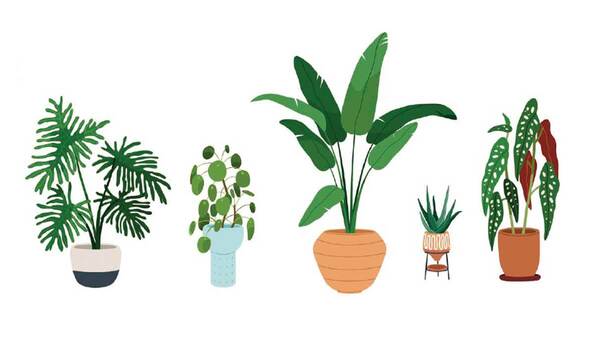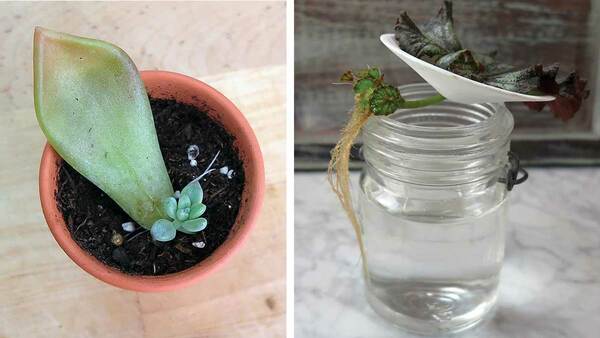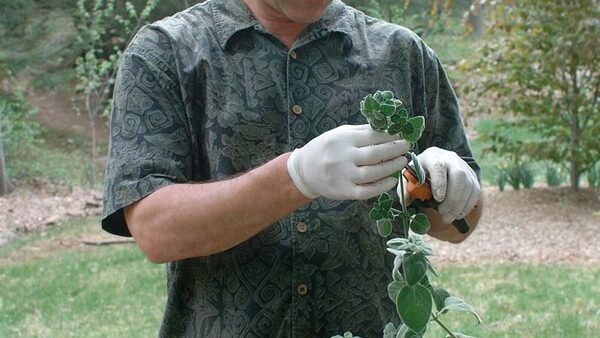If you’d like to learn how to propagate new plants from cuttings, the best way is to just go ahead and give it a try. In this video, you’ll see how easy it is to harvest stem cuttings and get them to root.
Stem cuttings from herbaceous perennials can be collected and propagated at any time of the year, as long as the plant has not been killed to the ground by frost. If tender perennial herbs like rosemary (Rosmarinus spp. and cvs., Zones 8–11) or scented geranium (Pelargonium crispum, Zones 10–11) are grown in containers and brought indoors, you can even take cuttings in winter. Hardy, drought-tolerant plants like lavender (Lavandula spp. and cvs., Zones 4–10) are good candidates for propagating from stem cuttings in spring, summer, or fall.
Prepare your propagation area
Before you get started, set up your propagation area. It usually takes at least two or three months for cuttings to establish roots, and during this time they need to be in a bright, warm location. You can place them under a grow light positioned a few inches above the foliage, or on a bright windowsill to provide the level of light they require. It is also helpful to cover new cuttings with a humidity dome or with plastic bags to prevent them from drying out while they root.
Gather your materials
- Sharp, clean clippers or bypass pruners. It’s a good idea to sterilize the blades with rubbing alcohol before taking cuttings.
- A jar of water to keep the cuttings fresh
- A starter tray with cells that are at least 2 inches deep, or small individual plastic pots
- A rooting medium. This should be a soilless mix, preferably one that is formulated for seed starting
- Rooting hormone (optional)
- A humidity dome that fits over the starter tray, or plastic bags that fit over individual pots
- A drip tray to go under the starter tray or individual pots
- A separate waterproof tray for bottom-watering the cuttings
Taking the cuttings
Plan on getting your cuttings into the rooting medium as soon as possible after they are harvested—within an hour or two, if possible. Because flowers can inhibit rooting, be sure to remove flowers, flower buds, or spent flower stalks from the part of the plant where you will be taking the cuttings. Take 2- to 4-inch cuttings from the tips of stems, the newest parts of the plant. Immediately place the cuttings in water to keep them fresh until they are ready to stick into the rooting medium.
Sticking the cuttings
Fill the starter tray or individual pots with the rooting medium, either seed-starting mix or a similar lightweight, finely screened, soilless mix. Strip the leaves from the bottom half of each cutting, dip the bottom end of the cutting in rooting hormone (if you are using it), and push the end of the cutting into the rooting medium. You can stick two or three cuttings into each cell or pot. Firm the rooting medium around the stems, and cover the cuttings with a humidity dome or plastic bags. Place under grow lights or on a bright windowsill, as close to the glass as possible. Water your cuttings as often as needed to keep the rooting medium from drying out. To keep new roots from being disturbed, place the starter tray or individual pots in a tray of water, let them soak for about 20 to 30 minutes, then move them back to a dry tray.
To learn more about the science behind propagating plants from cuttings, check out this article by Jared Barnes from Fine Gardening #204: How to Propagate Plants from Cuttings
If you’d like to learn how to propagate shrubs and trees from hardwood cuttings, which is best done during the dormant season, check out this article from Fine Gardening #149: Hardwood Cuttings Made Easy


















Comments
Log in or create an account to post a comment.
Sign up Log in